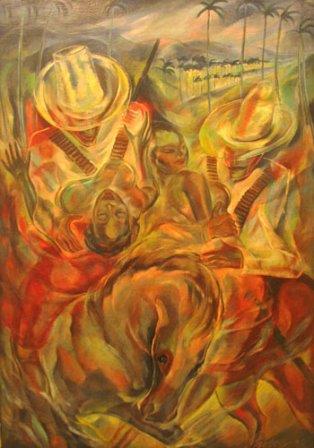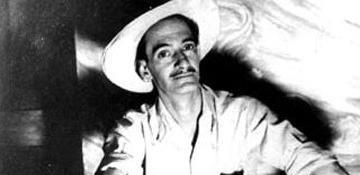Famous for his painting “El rapto de las mulatas” or the polemical work “Campesinos felices”, Carlos Enríquez not only became one of the most prolific Cuban painters of the twentieth century, but also displayed an exceptional sensuality to illuminate the transparencies in his paintings.
From El Greco, Goya and Bosch, Enríquez learnt and studied their refined techniques. He fed off Impressionism, Expressionism and Surrealism as aesthetic tendencies, then he created an unusual style, which was marked by the intense Cuban identity in what many called ‘El romancero criollo’ of Carlos Enríquez.
Then his paintings were plagued by mysterious legends of our land, typical images of the Cuban countryside and sensual scenes permeated by a bold eroticism.
Repeatedly there were frequent tropical colors, but tinged with a slight transparency that he obtained with the use of liquid tones. The result was an almost unreal but very suggestive atmosphere.

The mystery behind ‘El rapto de las mulatas’
Perhaps one of the most praised works by Carlos Enríquez is El Rapto de las mulatas (1938), which stands out for the careful treatment of the dramatic story.
Two peasants with voracious outrage subdued the mulatto women through violent movements. The silhouettes of the characters, which are drawn with incisive strokes, are arranged in such a way that seem to intertwine with each other, to stoke the fire of the very tense atmosphere.
The atmosphere becomes an accomplice of the agitated moment: The horses are restless, the half plume palms do not want to beat their leaves, and a faint gray mist envelops the box as if raging storm winds were blowing. The women are reluctant and want to escape, but lust and debauchery completely overpower their captors.
The magical work invites us to contemplate it repeatedly because it emanates mixed emotions. Likewise, the painter was able to recreate the sensuality and brutality, love and hate, fear and fearlessness.
However, Carlos Enríquez’s paintings were not only rebellious, but also very daring. You can appreciate that in his painting Campesinos felices, whose ironic title contrasts nicely with the desolate faces of poverty and misery of his characters. Social criticism and concern with his time made the work of this talented artist even more valuable.
The mysticism of transparencies in Enríquez’s pieces not only lies in the mastery to achieve them, but also in the expressiveness he always attained with them. On his careful way to treat the Cuban popular imagination, the poet and friend of the painter, Félix Pita Rodríguez said:
"Of that universe full of bloody chipojos, elusive jutías and tojosas laden with omens, through whose fleeting movements, the future becomes transparent; of that world through which rivers run. Moreover, there was always a "bend of the hangman" and guásima trees that you looked away when passing, because they were the “guásima trees of the hangman.” There were also roads that nobody wanted to transit after sunset, because they were the widow's roads, and behind each of those names was a multicolored stained glass, a complex and always instructive legend."
Carlos Enríquez, who is the pride of Cuban art, is part of the so-called movement of avant-garde painters of the twentieth century, which revolutionized the aesthetic-artistic patterns of their time from the academies. Like many others, he broke schemes and established bold methods of recreating landscapes, portraits and characters through very personal styles.
Source: Radio Enciclopedia











